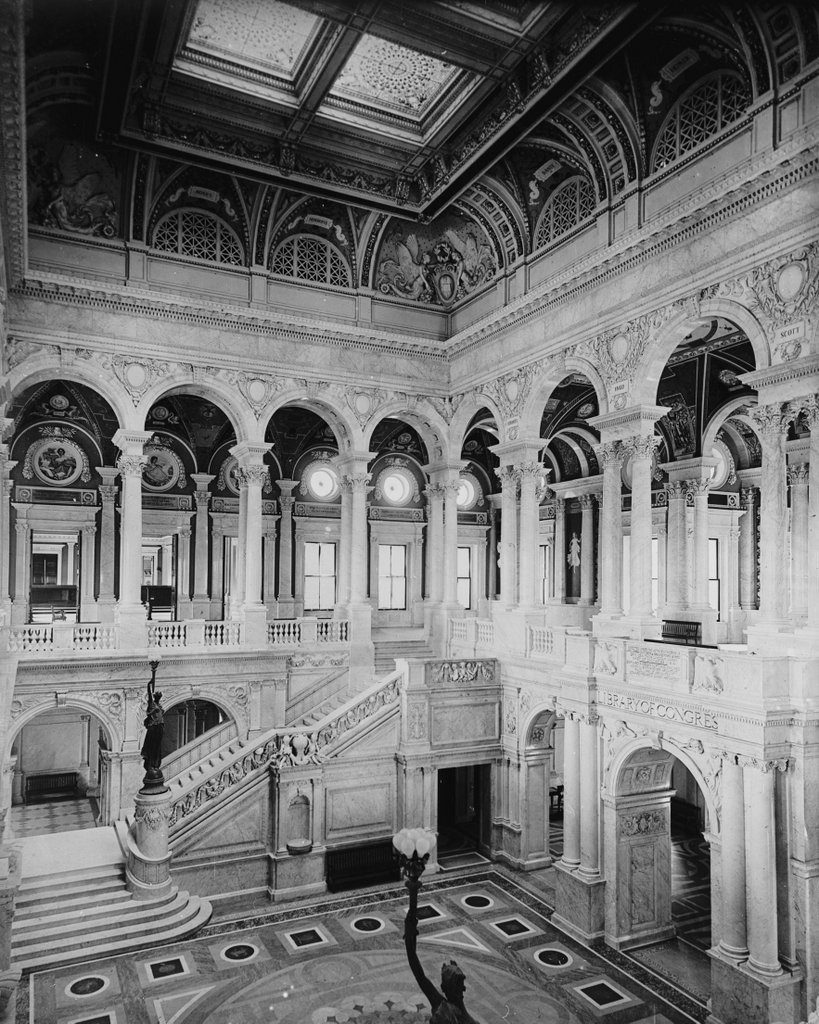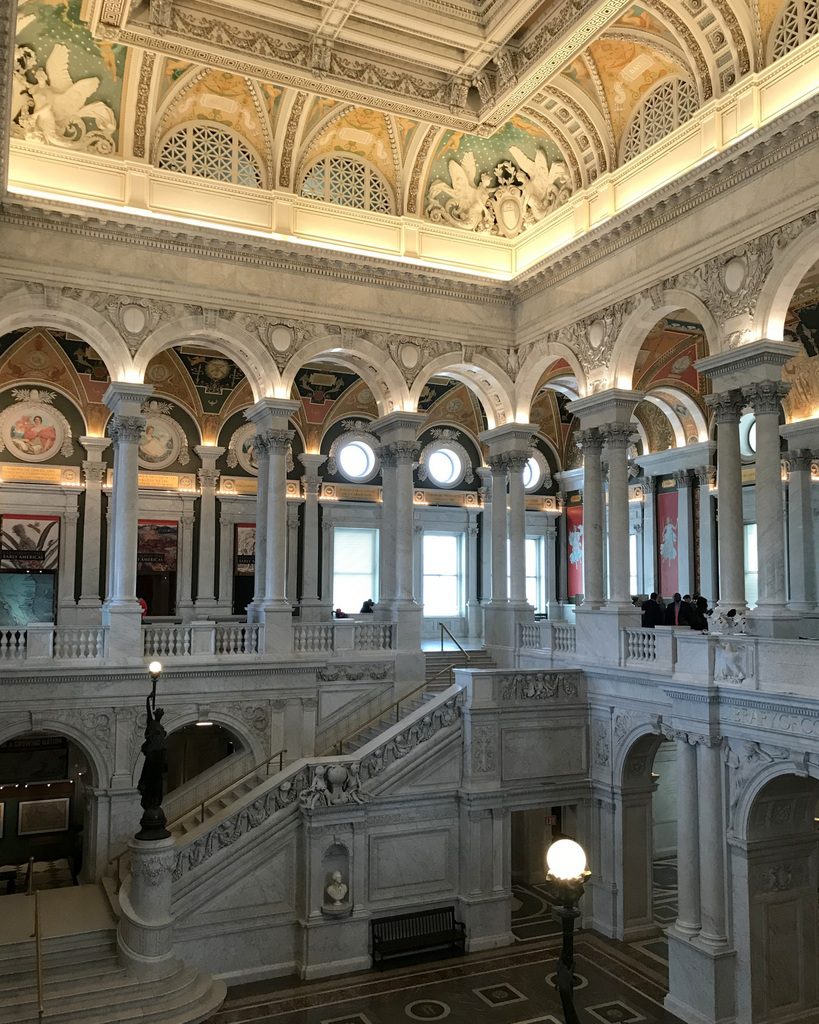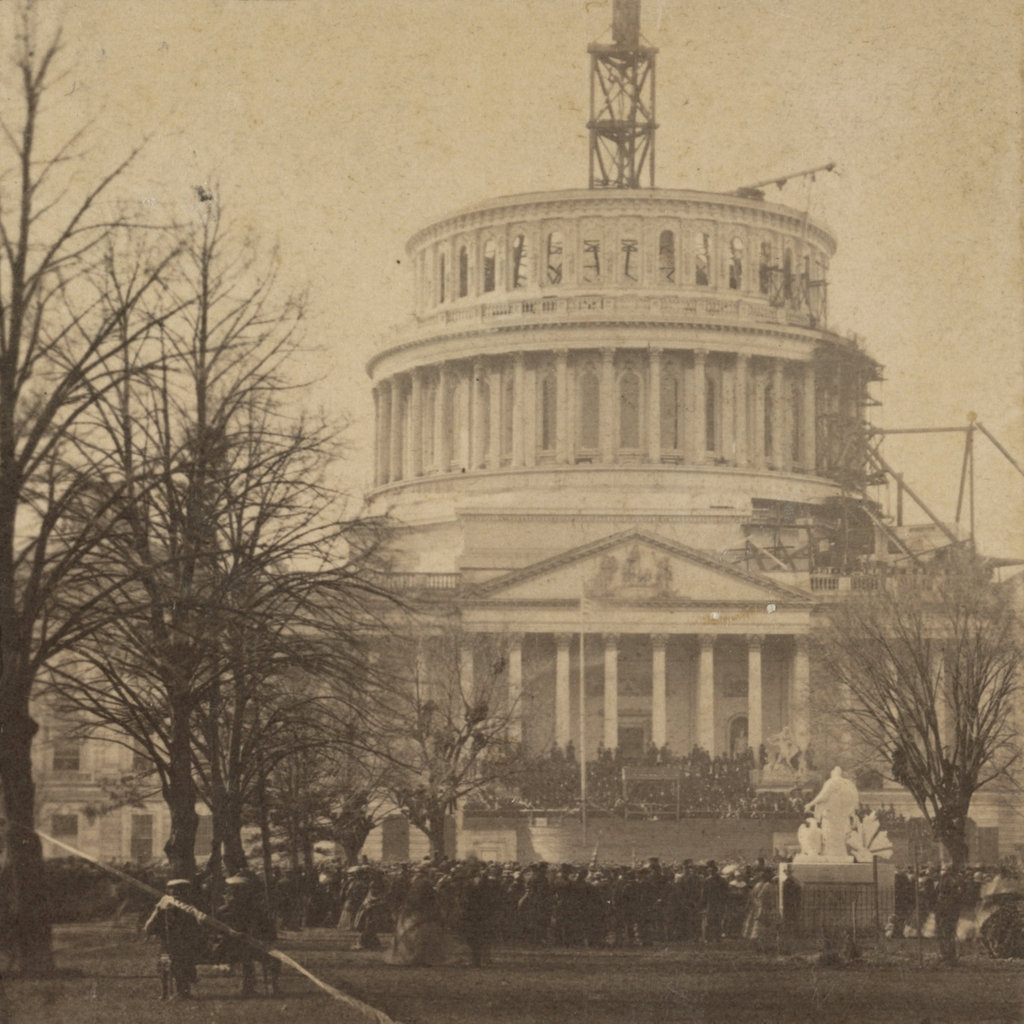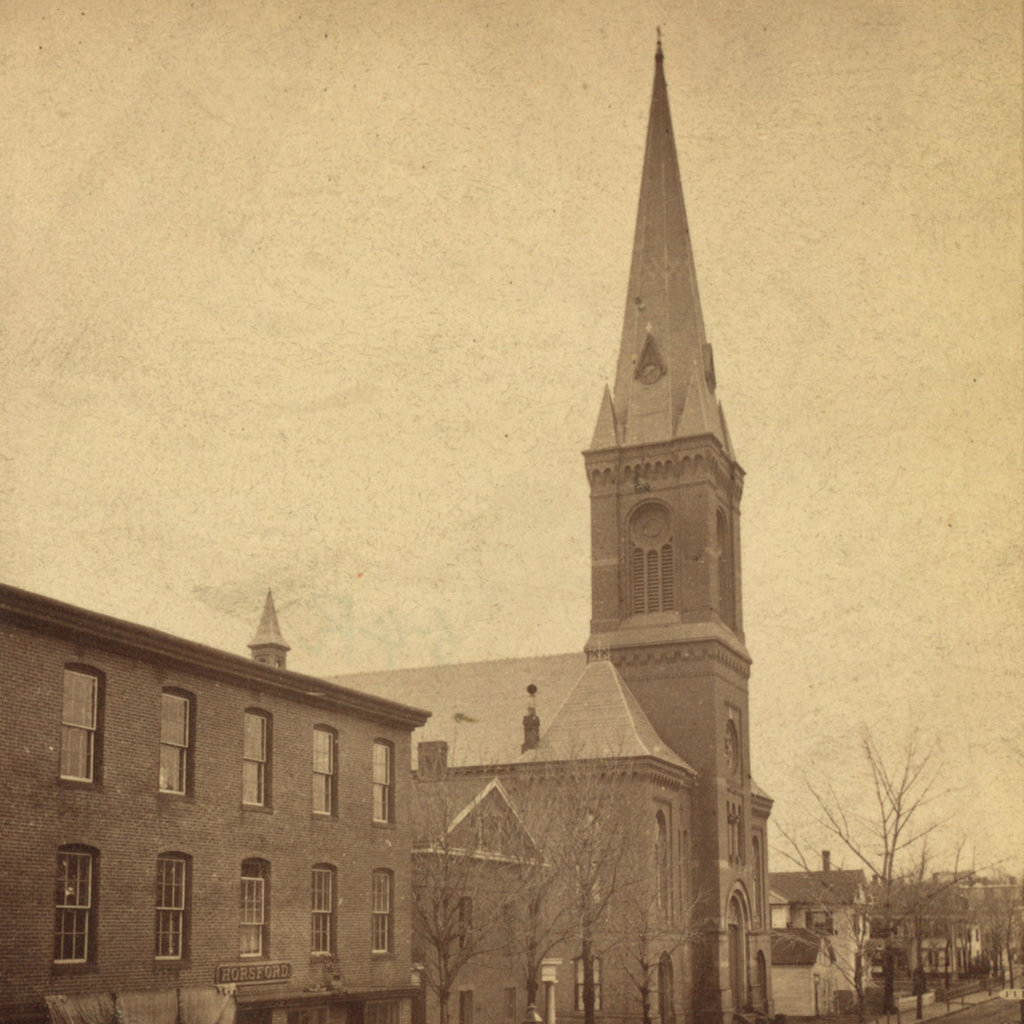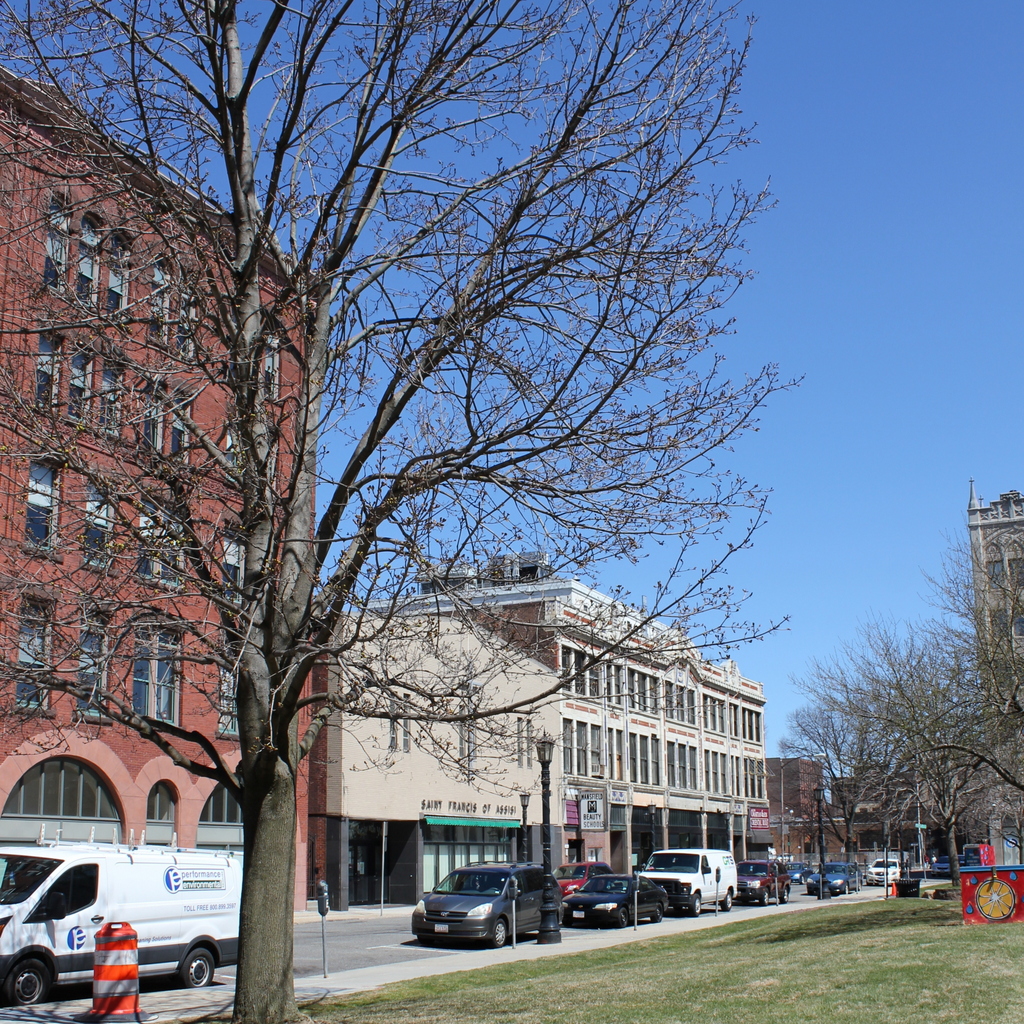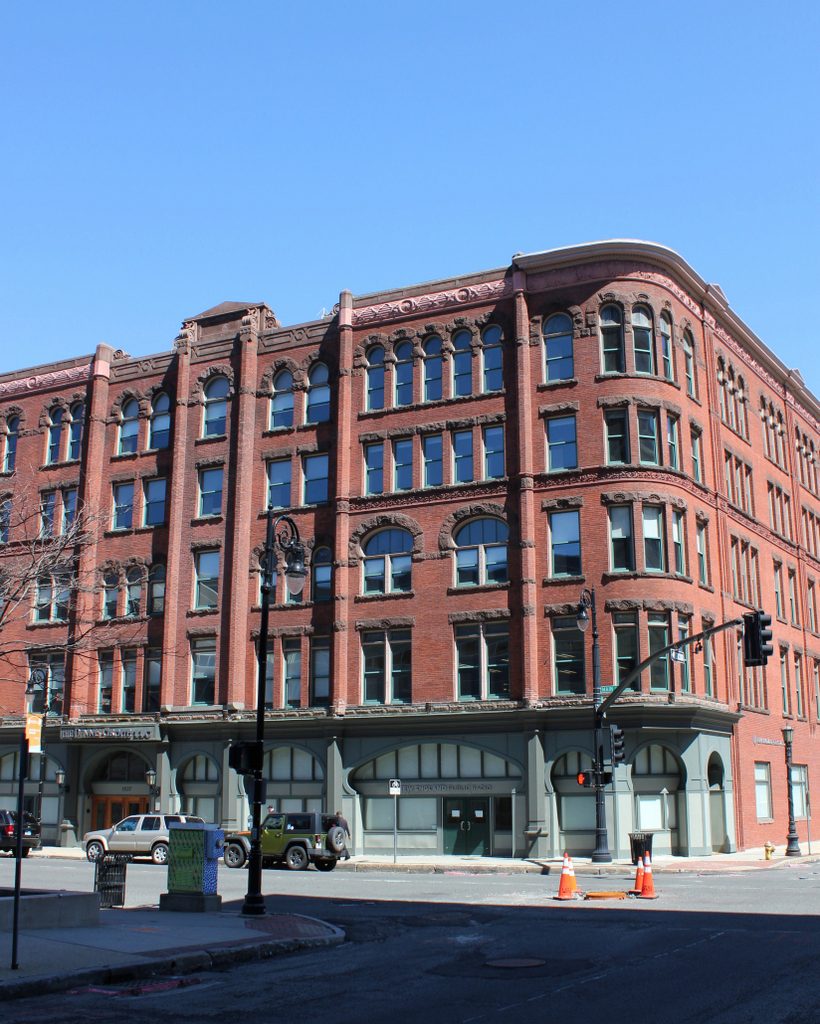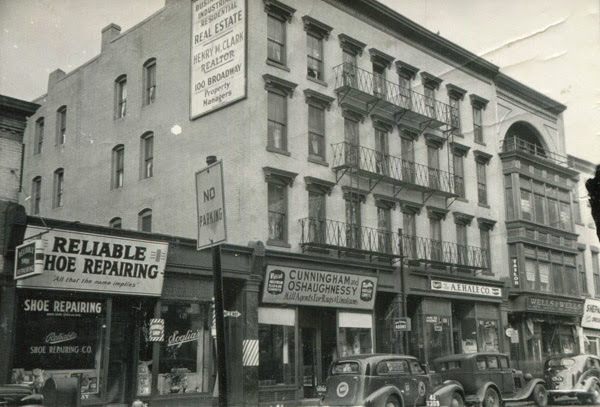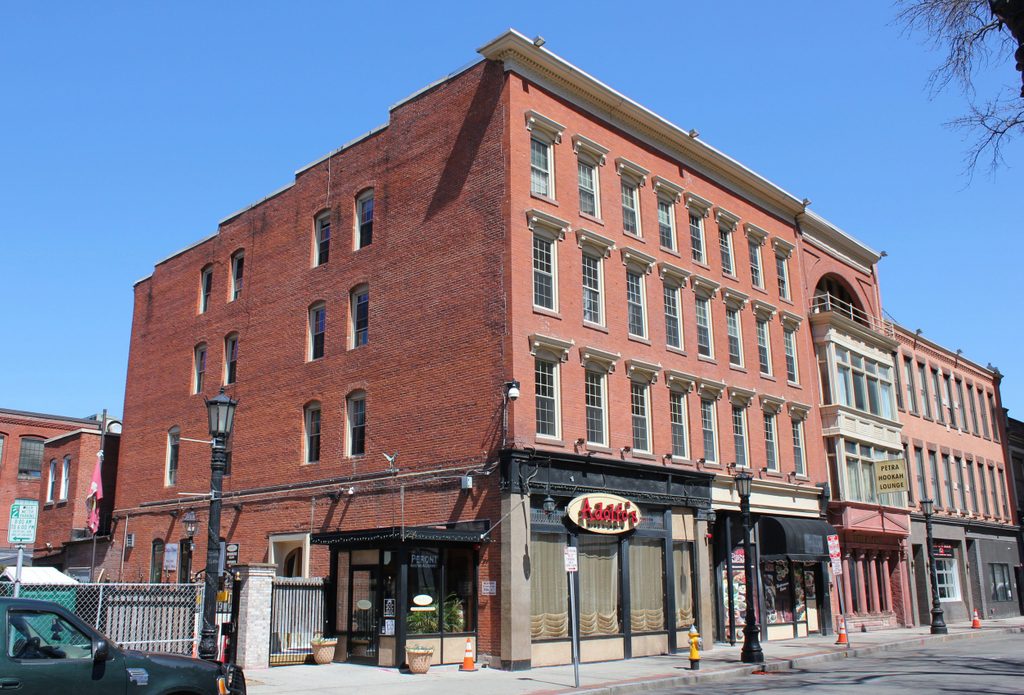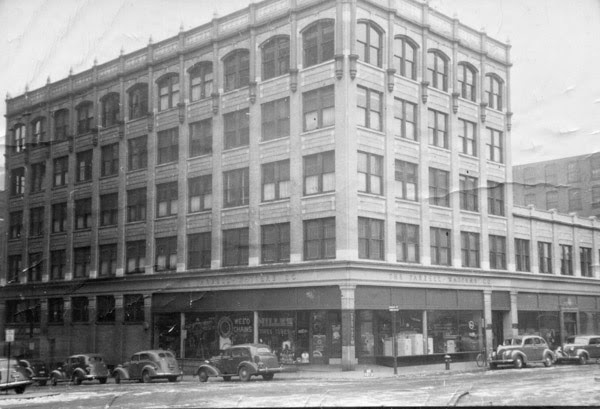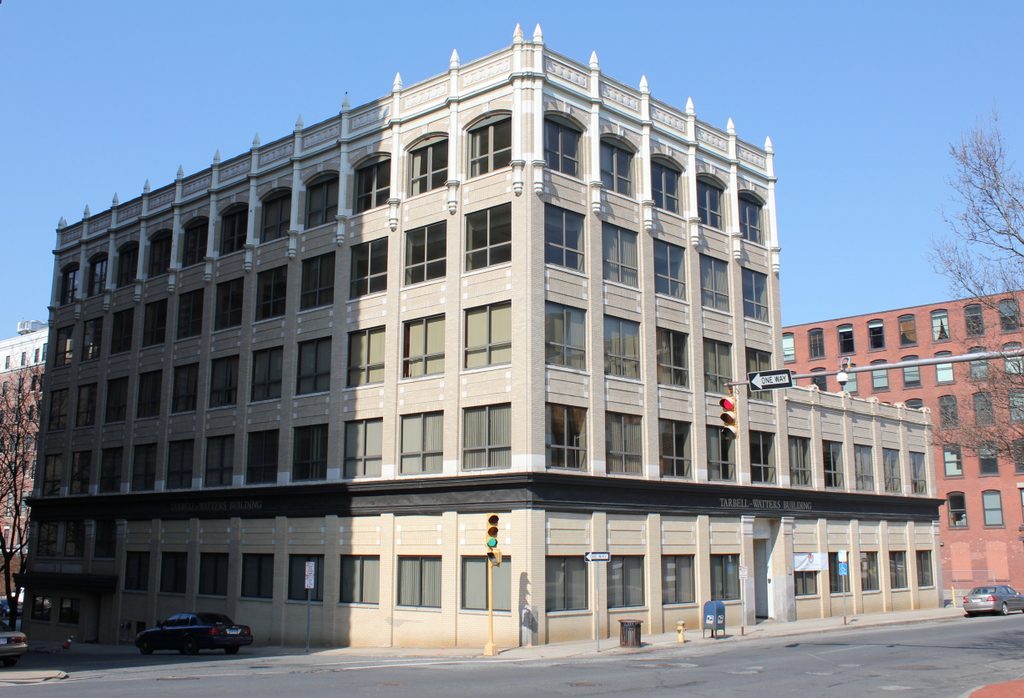The Great Hall in the Thomas Jefferson Building of the Library of Congress, around 1900-1901. Image courtesy of the Library of Congress.
The scene in 2018:
The Library of Congress is said to be the largest library in the world, with over 167 million items in its collections. These are housed in four different buildings in and near Washington, D.C., but the oldest of these is the main building, located directly across the street from the Capitol. Completed in 1897, and later named in honor of Thomas Jefferson in 1980, this building includes the main reading room, along with smaller specialized reading rooms and a variety of galleries.
Along with its massive collection of books, though, the Library of Congress also features outstanding Beaux-Arts architecture, on both the interior and exterior. Aside from the Main Reading Room itself, perhaps the single most impressive interior space is here in the Great Hall, where the main staircase is located. As these photos show, the space is lavishly decorated, and it includes a wide variety of works by some of the leading American painters and sculptors of the late 19th century.
This particular view shows the northeastern corner of the great hall. In the lower part of the scene is the staircase, which features carved images of young boys. Known as putti, but often conflated with cherubs, many of these figures represent different occupations, such as a printer, physician, musician, and electrician. Two others sit on opposite sides of a globe, representing Europe and Asia, and several others represent the fine arts. These were all carved by noted sculptor Philip Martiny, whose other works here included the carvings in the corner of the ceiling.
On the far right side of the scene is the arch that leads to the main reading room. It was designed by sculptor Olin L. Warner, and it features a pair of figures, one young and one old, representing knowledge. Directly above the arch is an inscription that recognizes the architects and engineers involved in constructing the library, and the inscription is flanked by a pair of eagles.
Further up in the great hall, the upper portions of the walls are painted with a variety of designs. On the left side of the scene, just to the left of the round windows, are three paintings that feature allegorical depictions of women. From left to right, they represent Understanding, Knowledge, and Philosophy. A fourth figure, just out of view to the left, represents Wisdom. Above these paintings, and around the ceiling of the second level, are a number of printers’ marks, which served as early forms of trademarks beginning in the Renaissance era.
The other noteworthy feature of the great hall is its ceiling. Although only partially visible in these views, it is decorated with murals done by artist Frederic C. Martin, in addition to the corner figures carved by Philip Martiny. Each of these carvings has two winged figures, and in between them is an image of a book and a torch, which represent learning. In the middle of the ceiling are six square skylights, with designs that match the floor of the great hall.
Today, nearly 120 years after the first photo was taken, remarkably little has changed here in the great hall. The building is popular among visitors to Washington, who are able to admire the architecture, explore the nearby exhibits, and view the library’s copy of the Gutenberg Bible, which is located on the first floor, just out of view beyond the lower right corner of the scene. Overall, the only readily visible change between these two photos is the bust of Thomas Jefferson, which now sits in what had originally been an empty niche beneath the staircase.

